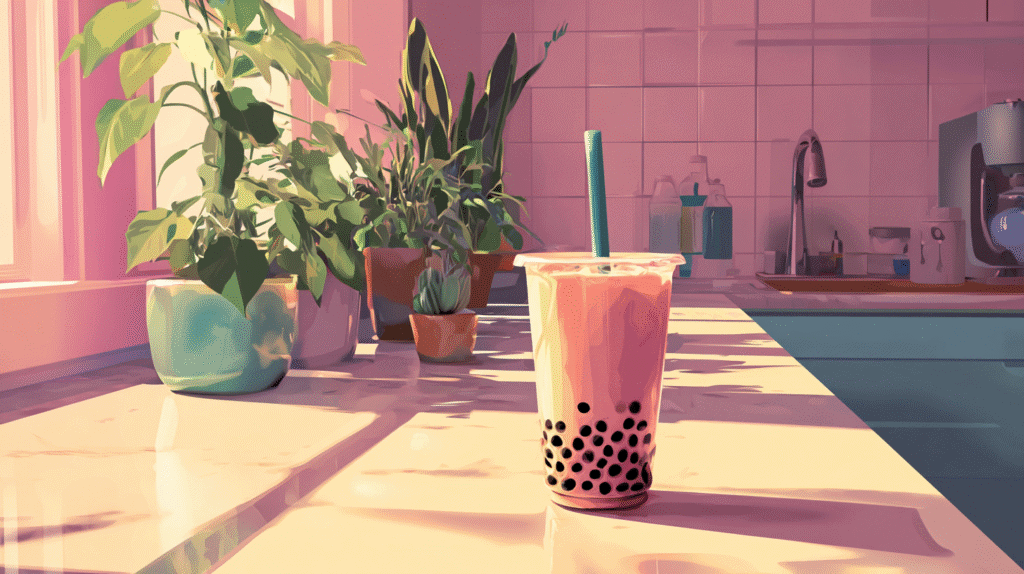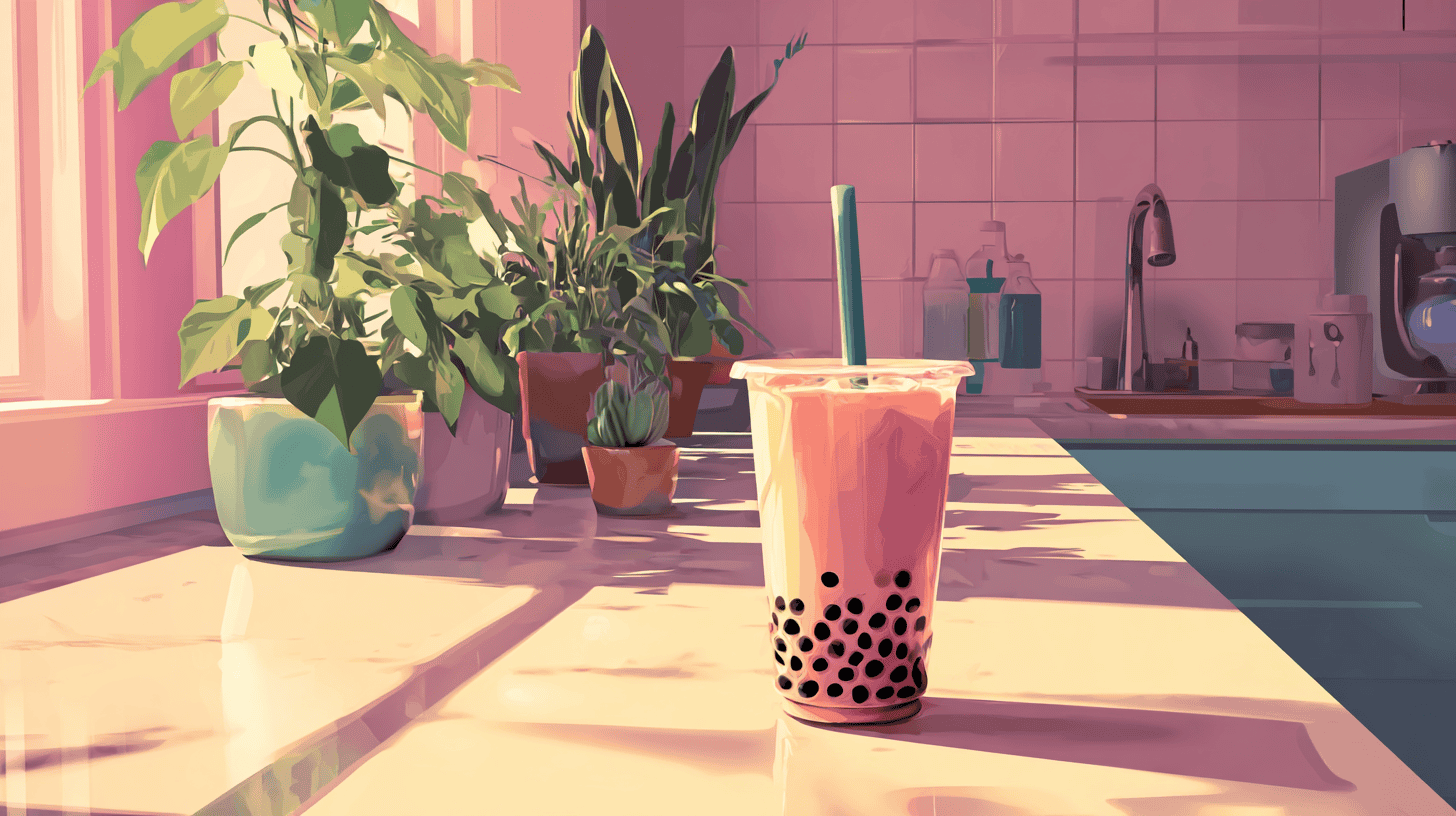Table of Contents
Can Diabetics Drink Boba Tea or Milk Tea? Understanding the Risks and Alternatives
If you’ve got diabetes, you might wonder if boba tea or milk tea is off-limits. The answer? Well, sort of—it’s possible, but only if you keep it in check and tweak the sugar and carb content.
Regular boba tea is loaded with sugar and those chewy tapioca pearls. That combo can send your blood sugar on a rollercoaster.
A lot of people with diabetes find that dialing down the sweetness or picking drinks with less sugar lets them enjoy boba without wrecking their blood sugar. Portion size matters too, and how often you’re sipping these drinks can sneak up on you.
You can still get that boba tea fix by making a few smart moves. I’ll walk you through what to watch out for and share some easy ways to make your order (or homemade version) a bit safer.
Key Takeaways
- Boba tea can work if you limit sugar and keep portions small.
- Tapioca pearls are carb-heavy and will affect blood sugar.
- Smarter drink choices make diabetes management easier.
Can Diabetics Drink Boba Tea or Milk Tea?
Let’s get real about the risks and how to keep your blood sugar in check with boba or milk tea. These drinks are pretty much built around sugar and carbs.
Risks and Considerations for Diabetes
Boba tea and milk tea usually come packed with sugar. The tapioca pearls? Mostly starch, which means more carbs.
Each serving can send your blood sugar way up, fast. Add in syrups, sweetened milk, or flavorings, and the risk climbs higher.
If you’re having boba often or in big cups, controlling your diabetes gets a lot tougher. To play it safer, you can ask for less sugar or pick a smaller cup.
Skip the extra sweet toppings. Honestly, drinking these kinds of drinks regularly isn’t a great idea if you’re trying to keep carbs down.
Importance of Glucose Control
Keeping your blood sugar steady is the main goal. Drinks high in sugar, like bubble milk tea, can mess with that quickly.
If you do decide to have milk tea, it’s smart to check your blood sugar before and after. You might need to tweak your meds or insulin—definitely something to discuss with your doctor.
Try to keep boba tea as an occasional treat. Pairing it with a meal that’s got protein or fiber can help slow down sugar absorption.
Paying attention to how your body reacts is key.
Understanding the Ingredients in Boba Tea and Milk Tea
Boba tea and milk tea are made with a handful of core ingredients. Some of these can really impact your blood sugar if you have diabetes.

Tapioca Pearls and Tapioca Balls
Tapioca pearls (or balls) are made from cassava root starch. They’re chewy, fun, and honestly, kind of addictive.
But they’re basically just carbs—little fiber, not much else. That means they’ll spike your blood sugar pretty fast.
A typical scoop of pearls? Around 100-150 calories and 20-30 grams of carbs. They’re often soaked in sugary syrup, too.
If you’re trying to cut sugar, you can ask for fewer pearls or skip them.
Sweeteners: Sugar, Condensed Milk, and Dairy Creamers
Most boba and milk teas rely heavily on sweeteners. Sugar is the main culprit and it’s absorbed quickly, causing blood sugar to jump.
Condensed milk adds not just sweetness, but also fat and extra calories. It’s sugary, so it’s another thing to watch.
Some shops use dairy or non-dairy creamers for that creamy feel. These can include added sugars or not-so-great fats.
You can always ask for less or no sugar when you order. It makes a difference.
Tea Bases: Black Tea, Green Tea, and Fruit Flavors
The base is usually black or green tea. Both are sugar-free and full of antioxidants, which is a plus.
Fruit-flavored teas might have natural or artificial flavors, sometimes with juice. These can tack on more sugar.
Stick with plain black or green tea bases if you want to keep things healthier. Unsweetened fruit teas are another option.
Add-Ons: Pudding, Fruit Jelly, and Fruit Juice
Boba drinks often come with extra stuff like pudding, fruit jelly, or even fruit juice.
Pudding is made from eggs, milk, and sugar—so, more calories and sugar. Fruit jelly is usually flavored with sugar and made with gelatin or agar.
Fruit juice varies, but even the natural stuff can raise blood sugar fast. Less is more with these add-ons.
Cutting back on extras can help trim down sugar and calories.
Nutritional Content of Boba Tea and Milk Tea
Boba tea and milk tea come with a mix of nutrients, but the real thing to watch is the amount of carbs, sugar, and calories. These can have a real impact on your blood sugar and weight.
Carbohydrates and Sugar Content
A regular 16-ounce boba tea? You’re looking at 38 to 90 grams of sugar and 45 grams of carbs—sometimes more.
The sugar mostly comes from the sweetened tea and the pearls. High sugar levels can spike your blood sugar, which is risky if you’re diabetic.
Tapioca pearls add carbs but don’t have much fiber or protein to help keep things steady. Drinking boba tea often can really push your daily carb intake up.
Calories and Weight Gain Concerns
Boba tea isn’t light on calories, either. One serving can run between 270 to 490 calories.
Most of those calories are from sugar and fat in the milk or cream. If you’re drinking these regularly, weight gain can sneak up on you.
Extra pounds can make diabetes harder to manage by lowering insulin sensitivity. Smaller portions or low-sugar options can help keep calorie intake down.
Effects of Boba Tea and Milk Tea on Blood Sugar Levels
Ingredients in boba tea and milk tea can push your blood sugar up. Some parts of the drink cause faster spikes than others.
Glycemic Index of Common Ingredients
The glycemic index (GI) tells you how quickly foods raise blood sugar. Tapioca pearls have a moderate to high GI—they’re mostly starch.
That means they’ll bump your blood sugar up pretty fast. Sweetened milk and syrups are even higher on the GI scale.
Tea itself is low or zero GI, so it doesn’t do much to blood sugar. If you want less impact, go for drinks with less syrup or ask for sugar-free.
Even without sugar, those pearls still add carbs.
Potential Blood Sugar Spikes
Sugar and carbs in boba tea can cause sharp blood sugar spikes. A standard boba milk tea—thanks to all that sugar and those pearls—can make your glucose rise quickly.
Bigger portions or frequent trips to the boba shop make it even harder to keep things steady. Sometimes you might need to adjust your meds.
Ways to reduce spikes:
- Pick smaller sizes
- Hold back on added sugar
- Skip extra high-carb toppings
Checking your blood sugar after drinking boba tea is a good way to see how your body handles it.
Healthier Alternatives and Modifications for Diabetics
If you want to enjoy boba or milk tea with diabetes, focus on cutting sugar, adding fiber or protein, and picking the right milk or creamer. These tweaks can help keep blood sugar and calories in check.
Reducing Sugar or Choosing Less Sugar
Sugar’s the big issue in boba tea for diabetics. Always ask for less sugar or no added sugar—most shops let you choose 50%, 25%, or even zero.
Skip syrup and sweet toppings if you can. Some places offer unsweetened alternatives like jelly or aloe vera instead of sugary pearls.
Natural sweeteners like stevia or erythritol can be a safer bet. Just remember, even low-sugar drinks can add up if you have them often.
Opting for Low-Carb or High-Fiber Options
Cut carbs by choosing drinks with less sugar and fewer starchy add-ins. Tapioca pearls are high-carb and low-fiber, so swap them for options like chia seeds or grass jelly.
These have more fiber, which slows down sugar absorption. Adding protein, like soy or pea protein powder, can help too.
Stay away from extra sweeteners or syrups, and try to balance carbs with fiber and protein.
Using Milk or Milk Alternatives
Full-fat dairy or sweetened creamers add calories and can raise blood sugar. Try unsweetened non-dairy milks like almond, soy, oat, or coconut—they usually have fewer carbs.
Soy milk is higher in protein, which helps slow sugar absorption. Always go for unsweetened versions to keep hidden sugars out.
Skip dairy creamers with added sugars. Unsweetened, low-fat milk or plant-based options give you that creamy texture without the sugar spike.
Potential Health Benefits of Select Ingredients
Some ingredients in boba or milk tea aren’t all bad. If you choose carefully, you can get some perks like antioxidants from tea leaves or vitamins from certain fruits.
Tea Antioxidants and Polyphenols
Black and green tea have antioxidants called polyphenols. These help fight cell damage and might support heart health and blood sugar control.
Green tea usually has more antioxidants than black tea. If you stick with unsweetened or lightly sweetened tea, you can enjoy these benefits without spiking your blood sugar.
Adding sugar or syrups pretty much cancels out the positives, though.
Vitamins and Minerals from Fruits
Some boba and milk teas add fruit or fruit flavors, which means you get some vitamins and minerals. Mango, strawberry, or lychee can give you vitamin C, potassium, and a bit of protein.
But fruit juices or purees can be high in natural sugar. If you want the perks without the sugar rush, stick to fresh fruit toppings or just a little fruit flavor.
Considerations for Frequency and Portion Size
If you have diabetes, it’s worth paying attention to how often you drink boba or milk tea. These drinks are usually high in sugar and carbs, which can spike your blood sugar.
It’s best to keep boba tea as an occasional treat—not a daily habit. Too much adds a lot of extra calories and carbs without much nutrition.
Portion size makes a difference. A regular 16-ounce boba tea can pack in more sugar than you need in a day.
Choosing a smaller size or sharing with a friend helps cut down on calories and carbs.
You can try:
- Asking for less or no added sugar
- Skipping sugary toppings like pearls or jelly
- Picking tea with milk alternatives (like unsweetened almond milk)
Managing your blood sugar is all about balance. Keeping track of carbs and calories from treats like boba tea can help you stay on top of your overall diet.
Caffeine Content and Other Side Effects
Boba tea, or milk tea, usually gets its caffeine from the tea base—think black or green tea. The caffeine content can swing, but it’s often in the ballpark of 30-60 mg per serving.
If you have diabetes, caffeine might mess with your blood sugar by causing a temporary spike. Managing your condition could get trickier, especially if you’re sipping on multiple cups or mixing in other caffeinated drinks throughout the day.
Bubble tea doesn’t just bring caffeine to the table. It often comes loaded with added sugar and milk. Too much sugar? That’s a problem. It can push your blood sugar higher and bump up the risk of weight gain.
The milk adds phosphorus, too. If you’ve got kidney issues or other medical stuff going on, extra phosphorus can be a concern.
Possible side effects from drinking too much bubble tea:
- Blood sugar spikes
- Higher chance of constipation (thanks, tea components)
- More phosphate and oxalate in your urine
You can cut down on side effects by asking for less sugar or swapping out the milk for an alternative. Honestly, moderation is your friend here, and balancing your bubble tea with water doesn’t hurt.
Noticing anything weird after drinking boba? Maybe chat with your healthcare provider about your caffeine limits and what works for your diet.
